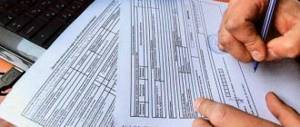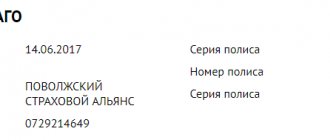Through the organs of vision, a person receives most of the information. This is why it is so important to take care of your eyes and vision from childhood. Often, the weakening of visual functions occurs unnoticed, which raises the question of regularly visiting an ophthalmologist and checking visual acuity.
In this article
- Why is it important to have your eyes checked?
- How is visual acuity checked?
- Sivtsev table
- How is vision checked using the Sivtsev table?
- Optotypes of Pole
- Golovin table
- Snellen chart
- Siemens star
- Duochrome test
- Amsler grid
- How is vision checked in children?
- Ways to test children's vision at home
- Determination of visual acuity in preschool children
- How to measure vision yourself?
- How often should you have your eyes checked?
- The first symptoms of visual impairment
Why is it important to have your eyes checked?
More and more people are facing vision problems. Neither children nor adults are immune from them. This is due to poor nutrition, poor environment, constant use of computers and mobile gadgets and other factors. Very often, people do not notice that their vision has deteriorated or simply do not pay attention to the first symptoms, attributing their appearance to fatigue and eye fatigue. This may cause the refractive error or visual pathology to progress. This is especially dangerous in childhood, when identifying an eye disease and stopping its development is most important.
The future full life of the child will largely depend on this. To avoid complications, it is necessary to regularly visit the ophthalmologist’s office, regardless of whether the first symptoms of vision loss appear or not.
How is visual acuity checked?
Visual acuity is the ability of the eye that allows you to see two objects or two points located at a certain distance from each other, separately. This function of the visual apparatus is one of the most important; it depends on the width of the pupil, refraction, transparency of the lens, cornea and vitreous body, the condition of the retina, optic nerve, as well as on age and other factors.
Visual acuity is determined in the ophthalmologist's office using computer equipment and tables. With the help of instruments, the doctor examines the fundus of the eye, the condition of the retina and the eye as a whole, and calculates various parameters that will be required to select correction means - glasses and contact lenses. In addition, tests and other procedures may be required to determine the causes of deterioration in visual function. Visual acuity is determined using special tables, the most famous of which is Sivtsev’s table. It is familiar to every person from school age. There are other methods. Let's find out what their features are and how to check your vision yourself, without turning to a specialist.
How to pass a test with poor vision?
The first rule that people with poor vision need to remember when trying to pass a medical examination is the possibility of using correction devices during diagnosis. If you use glasses or contact lenses in everyday life, you need to go to the ophthalmologist wearing them.
Even if in this case there is no confidence in the successful examination of the doctor, you can use night ortholenses. With their help, you can restore your vision to 100% for a short time (up to two days), so correction agents will not be needed during the diagnosis. Of course, this method is essentially deception of the doctor, but in a hopeless situation it can help a person even with very poor eyesight. However, do not forget that very poor driver vision threatens serious consequences on the road not only for himself, but also for those around him. Therefore, this way of solving the problem of passing a doctor from an ethical point of view is questionable.
Sivtsev table
Perhaps everyone remembers the poster with the large black letters ШБ located at the very top. This is a table for determining visual acuity, invented by the scientist, ophthalmologist Dmitry Aleksandrovich Sivtsev. It is a group of printed letters - optotypes. There are only seven of them: B, I, K, Sh, Y, M, N. They are written in 12 lines in different orders. Starting from the top line, optotypes decrease in size. To the right of the lines, the value corresponding to visual acuity is indicated. On the poster it is indicated by the Latin letter V, and it is expressed in a conventional unit (not to be confused with diopters), with which a person can distinguish the letter from a distance of five meters (0.1, 0.2, 0.3 and so on). To the left of the letters is another value - the distance from which a person with good eyesight should be able to read the letter freely. This parameter is designated by the letter D.
How is vision checked using the Sivtsev table?
The table hangs on the wall and is illuminated by two fluorescent lamps. Lighting should be 700 lux. The lower edge of the lamp is located at a height of 120 cm from the floor. Each eye is checked separately. The subject sits on a chair five meters from the table and covers one eye with a shutter. You need to keep your head strictly straight. The doctor points to the optotype with a pointer, and within two to three seconds the person being tested must name the letter.
Visual acuity is defined as complete if a person correctly named all the signs, and incomplete when errors are made, but their number is limited - no more than one in lines from the first to sixth and no more than two in lines from seven to ten.
If the result obtained is below 0.1, then the patient is nearsighted (myopia), if above 0.1 - farsighted (hyperopia). Normal refraction of the eye is called emmetropia, that is, for such a person the point of clear vision is at a distance of five meters or more. When an object is placed at a distance of less than five meters, the rays are collected in parallel on the retina. In this regard, exactly five meters are considered the optimal distance for visometry.
If the patient is unable to distinguish optotypes even in the very top line, which with ideal vision can be seen from 50 meters, he is asked to move half a meter closer to the table (or closer depending on the need). Then visual acuity is calculated using the formula V = d / D. D is the distance for a person with good vision, and d is the actual distance from which the patient sees the letters in the table. If the person being tested does not see the letters of the first row (visual acuity is lower than 0.1), Pole optotypes are used.
How to check vision using tables?
Methods for diagnosing the eyes vary somewhat, depending on which table the ophthalmologist uses. But in general the procedure follows the same principle:
1. A person is seated opposite the table at a certain distance. 2. The doctor points to a line or symbol on the table and asks the person to name it. 3. If a person can clearly distinguish the indicated symbol or line, the doctor points to a smaller font and so on until the patient sees a line indicating 100% visual acuity. 4. If at any stage the patient cannot see the symbol in the line, or sees it blurry, the ophthalmologist needs to put on special glasses with replaceable lenses. 5. The lenses are changed and the testing procedure is repeated until the patient clearly sees the required lines. 6. Based on the number and strength of installed glasses, visual acuity is determined and a prescription for glasses or contact lenses is written.
The distance of the vision test depends on which chart the doctor uses. It is important to choose it correctly, otherwise the effectiveness of the test will tend to zero.
Your eyesight should be checked by a professional ophthalmologist, in compliance with all rules and regulations. Home tests will not provide an accurate result.
Optotypes of Pole
Polyak's optotypes are a method for determining visual acuity, named after the Soviet ophthalmologist Boris Lvovich Polyak. He created his method specifically for military medical and medical-social examination, during which disability or suitability for military service is identified. Optotypes are sticks, strokes, rings depicted on the poster, which are located at a fairly close distance from the patient’s eyes. The width of the gaps between the strokes, as well as the thickness of the lines, determines visual acuity in the range from 0.04 to 0.09.
Golovin table
It was created by oculist Sergei Selivanovich Golovin. It is practically no different from the table for testing vision proposed by Sivtsev, and they are used, as a rule, together, but it uses Landolt rings as optotypes - black circles broken on one side. The rings on the poster are located similarly to the optotypes in Sivtsev’s table. Golovin’s method is more reliable, because remembering rings and deceiving an ophthalmologist is much more difficult than in the case of letters.
Snellen chart
To determine visual acuity, a technique developed by the Dutch ophthalmologist Hermann Snellen is also used. The table was created in 1862 and is still considered one of the most reliable and accurate. It consists of capital Latin letters. It has 11 lines. Letters decrease in size from top to bottom. The largest optotypes can be distinguished by a person with good vision from a distance of 60 meters. Also, normal vision allows you to see signs located below the first large line from distances of 36, 24, 18, 12, 9, 6, 5 meters.
During the examination, the table is located at a distance of 6 meters from the patient. He closes one eye and reads optotypes with the other. Visual acuity is indicated by the lowest row, which was recognized accurately. The normal indicator is 6/6. In this case, the bottom lines from six meters differ. If the patient normally sees only the lines that are located above the row visible from 12 meters by a person without refractive errors, then his visual acuity is 6/12. The doctor will determine the values in negative and positive diopters.
This table has Latin notations, in addition, it shows distances in feet, so it is used mainly in Western countries.
Eye test charts
There are different options for vision testing tables. Among them are:
- Pole's optotypes;
- Golovin table;
- Siemens star;
- Snellen chart;
- duochrome test;
- Rabkin table;
- Amsler grid;
- Orlova's table;
- Sivtsev's table.
The last one is the most popular. It consists of 12 lines with letters of the Russian alphabet. They are also called “Optotypes”. With each line, the letters decrease in size from top to bottom.
On the left is the distance from which the patient should be able to clearly distinguish them. On the right is a value showing visual acuity when reading optotypes at a distance of 5 meters from the poster.
If, during diagnosis using the Sivtsev table, the doctor doubts the result, then he can use any other table for examination, as indicated above.
Therefore, those people who want to pass the test the first time for some reason of their own tend to memorize Sivtsev’s table by heart. Let's look at how this can be done.
Siemens star
This is another technique that is not a table, but a star consisting of 54 black rays on a white background. The diameter of the star is 10 cm. The rays converge from the periphery to the center of the circle. A person without eye refractive errors from five meters observes how the rays merge exactly in the middle, they begin to overlap each other. This happens when 2.5 cm remains to the center of the star. At a distance of more than five meters from the picture, the rays gather into a solid mass of gray color.
In the presence of refractive errors, the rays seem to merge with the background and overlap each other. However, closer to the center they can again be clearly visible. The star begins to appear as its own negative, that is, the white background becomes black, and the black rays become white. If you have good eyesight, then you can observe this effect by placing the picture close in front of your eyes.
This technique allows you to determine not only myopia and hypermetropia, but also astigmatism. With this pathology, the outer boundary of the rays does not form a circle, but an ellipse or an even more complex figure.
Rabkin table
Find out the answer
The picture shows the number 96. It can be seen by both people with normal color vision and those with color blindness. The image is presented to ensure that the patient understands the essence of the test.
Find out the answer
Both colorblind and normal people see a square and a triangle. The picture is also presented to demonstrate the essence and exclude the simulation.
Find out the answer
For people without the disease - 9. Patients who do not distinguish between red and green colors see 5.
Find out the answer
Trichomatists see a triangle, colorblind people see a circle.
Find out the answer
People with normal vision see the number 13, while people with impaired color vision see the number 6.
Find out the answer
The picture shows a circle and a triangle. Colorblind people won't see any of these figures.
Find out the answer
All people see the number 9.
Find out the answer
Usually people with normal and impaired color vision see 5. However, the latter find it difficult. In advanced forms of color blindness, patients do not see numbers at all.
Find out the answer
Trichomates and deuteranopes (who do not distinguish the color green) recognize 9. Protanopes, that is, people who do not distinguish the color red, see 8 or 6.
Find out the answer
Patients without pathology see the number 136, colorblind patients see 66, 68, 69.
Find out the answer
All people recognize the number 14.
Find out the answer
Trichomates and deuteranopes (who do not distinguish the color green) recognize 12. Protanopes, that is, people who do not distinguish the color red, do not see anything.
Find out the answer
In the picture, people without pathology see a circle and a triangle. Deuteranopes are just a triangle. Protanopes are only a circle.
Find out the answer
Patients with normal color vision see 3 and 0 at the top. Deuteranopes -1 at the top and 6 at the bottom. Protanopes - 1 and 0 at the top, 6 at the bottom.
Find out the answer
Trichomates are distinguished in the upper part on the right by a triangle, on the left by a circle. Deuteranopes - square at the bottom, triangle at the top left. Protanopes - 2 triangles at the top, a square at the bottom.
Find out the answer
Patients without pathology see 96. People who cannot distinguish green color - 6, red - 9.
Find out the answer
A triangle and a circle are depicted. Deuteranopes see a circle, protanopes see a triangle.
Find out the answer
For trichomates, all the rows are the same color, and the columns are different. Deuteranopes see columns 1, 2, 4, 6, 8 and all rows as one color. Protanopes - 3, 5, 7 columns and all rows of the same color.
Find out the answer
Patients without pathology see 25. People who cannot distinguish between green and red colors see 5.
Find out the answer
A triangle and a circle are depicted. People with impaired color vision cannot distinguish figures.
Find out the answer
Patients without pathology and protanope see 96. People who do not distinguish the color green - 6.
Find out the answer
Usually people with normal and impaired color vision see 5. However, the latter find it difficult. In advanced forms of color blindness, patients do not see numbers at all
Find out the answer
People without pathology see columns as monochromatic and rows as multi-colored. Colorblind people see columns as multi-colored and rows as monochromatic.
Author's rating
Author of the article
Alexandrova O.M.
Articles written
2040
about the author
Was the article helpful?
Rate the material on a five-point scale!
( 92 ratings, average: 4.60 out of 5)
If you have any questions or want to share your opinion or experience, write a comment below.
Duochrome test
The duochrome test is used to determine myopia and farsightedness. The table is a rectangle divided into two halves. One of them is red (left), the other (right) is painted green. The letters are located exactly in the middle, the same as in Sivtsev’s table. The purpose of the test is to determine in which color field the patient distinguishes optotypes better. If he sees letters better on a red background, then he suffers from myopia, if on a green background, he suffers from hypermetropia. If the symbols are clearly visible in both fields, then the vision is excellent, that is, we are talking about emmetropia.
This test must be taken with glasses if there is already a diagnosed visual pathology. After checking, it is necessary to adjust the optical power of the lenses.
Amsler grid
This test is needed to check the central field of vision and allows you to identify such ophthalmological diseases as macular degeneration of the retina, scotomas (dark spots in the eye), metamorphopsia (distortion of objects, their shapes, colors, sizes).
The grid (also called a grid) is a large black square with numerous small black squares inside on a white background. There is a large black dot in the center of the reticle. The test is carried out as follows:
- The Amsler grid is located at the patient’s eye level at a distance of 30 cm;
- the patient sits on a chair with his back straight;
- one eye is covered with the palm of your hand (you cannot put pressure on it, otherwise the results will be erroneous);
- the other eye looks at the central point for 5 seconds;
- then you need to approach the grid by 10 cm and look at the point for another 5 seconds;
- takes the starting position at a distance of 30 cm from the net;
- the process is repeated with the second eye.
In the absence of ocular pathologies, all lines and angles of the grid are straight. When the lines are distorted and bent, we can talk about disturbances in the retina. One of the conditions of the test is that it must be taken in the optics that the patient uses in everyday life.
The doctor decides which table to check your vision. It all depends on the specific case, the patient’s complaints and the progress of the examination.
How to learn a table for vision?
Is it possible to memorize a table and deceive the doctor? Some people ask this question and search the Internet for techniques for quickly memorizing tables. When a person wants to get a driver's license of a certain category, and he has vision problems, he may try to resort to such deception. However, the specialist immediately determines the presence and absence of refractive errors by focusing and the patient’s eyes. In addition, in addition to tables, instruments are also used that cannot be deceived. Therefore, asking such a question is pointless. Do not try to deceive the doctor, so as not to get into an awkward situation.
Features of vision testing for motorists
During the research, the following parameters are checked:
- Visual acuity. For this check, the Golovin or Sivtsev table is used. We are talking about a board on which letters of different sizes are located. Each subsequent row contains smaller letters. Accordingly, the more lines a person can read, the better his vision. To check, the driver moves 5 meters away from the table, after which he closes one eye and lists the letters in a specific row.
- Width of field of view. Those who have a field width exceeding 20 degrees are allowed to drive. A person with no peripheral vision will not receive a driver's license.
- Perception of colors. For this study, the Rabkin table is used. It depicts various colored objects that help identify color blindness in a person.
How is vision checked in children?
All of the above vision testing tables can only be used if the patient knows the alphabet. How to test visual acuity in preschoolers? This is very important, since it is necessary to identify refractive errors as early as possible in order to stop the progression of the pathology. In children, the eyeball is just developing and you need to carefully monitor all changes to prevent the occurrence of serious diseases, for example, strabismus.
Babies undergo their first vision test as soon as they are born. It is performed by a neonatologist. He examines the baby's eyes without using any instruments. However, such a test can only give a superficial opinion about the condition of the child's eyes. It allows you to identify obvious congenital anomalies. If any are detected, the neonatologist gives a referral to an ophthalmologist.
The first scheduled vision test is carried out at 3 months. Next - at 6 and 12 months after birth. Here the ophthalmologist already uses special instruments during the examination.
General provisions
A driver's medical examination involves examining a motorist by several doctors. The purpose of this procedure is to determine whether a driver can drive a vehicle of a particular category. And one of the main stages of the study is passing through an ophthalmologist.
If a person has poor vision, he will not be allowed to drive a vehicle. Poor vision can cause an accident, because the driver may simply not notice a pedestrian or a hole in the road, causing a serious accident.
The driver can undergo a medical examination in both public and private medical institutions. Checking with an ophthalmologist is also possible at some driving schools.
The results of a driver's medical examination will be valid only if the institution has a license to conduct such procedures. Only a qualified specialist who has undergone appropriate training can conduct a driver inspection. If the requirements established by current legislation are not met, the medical certificate will be considered invalid.
Ways to test children's vision at home
Parents can also assess a child’s visual abilities at home. They can observe the baby's behavior and the reaction of his eyes when showing him various objects. Babies' pupils must respond to light, and at two months they begin to fixate their eyes on objects. By six months, children recognize familiar objects. At one year old, babies can see small objects from a distance of one meter. By about two years, this distance will be 2.5 meters. If you notice any deviations from the norm, immediately make an appointment with a specialist.
How the research is carried out
Visual acuity is determined from a distance of 5 m from the eyes of the person undergoing the study. As a rule, a table of the established size is illuminated by an incandescent lamp or two fluorescent lamps so that the illumination intensity is 700 lux. The ophthalmologist directs the light from the lamp(s) strictly onto the table, so that it does not hit the person’s face.
The test is carried out separately for each eye, namely, the eye not participating in the test is covered with a palm or a special device made of thick cardboard or plastic (not allowing the patient to squint). Visual acuity is complete if, when reading, in rows that correspond to visual acuity of 0.3-0.6, no more than 1 error is allowed, in rows corresponding to visual acuity of 0.7-1.0 - no more than two. Only 2 seconds are provided for sign recognition. The value of visual acuity will correspond to the numerical value of the designation V in the final line, where unnecessary errors will be made. If a subject sees more than 10 lines from a distance of 5 meters, this is not farsightedness. Such vision is above the average statistical norm (or in other words, “eagle vision”).
Determination of visual acuity in preschool children
Between the ages of three and seven, a child can already speak, but may not yet know the alphabet. Then Orlova’s table comes to the rescue. It resembles the tables of Golovin and Sivtsev, but instead of rings and letters, it contains pictures (mushrooms, stars, trees, animals) that the child is able to name.
The principle of the examination is the same. The preschooler is at a distance of five meters from the poster. Looking at it with one open eye, he begins to name the images shown by the ophthalmologist. Since children get tired faster than adults, the ophthalmologist begins to ask about the pictures in the top rows and selects only one from each row. If the child is not able to give the correct answer, then he is shown another image in the same row. This is done to make sure that the little patient really does not see the object well, and does not just not know its name.
How to measure vision yourself?
Can a person use an ophthalmologist's chart to test their vision at home? In principle, nothing prevents this. However, in the ophthalmologist’s office all conditions have been created for a full examination. Moreover, only a doctor can make the most accurate measurements. Testing visual acuity at home is only needed to roughly find out about the presence of vision problems. If you independently determine visual impairment, you need to go to the clinic and undergo a detailed examination.
So, if you still decide to carry out visometry at home, then you can make a Sivtsev table yourself. You will need three white matte A4 sheets, a printer, a black marker, tape and glue. You find the necessary files on the Internet and print them. If the contrast is not very high, then it can be increased using a marker or felt-tip pen. Three printed sheets are connected with tape and hung on a door, wall or cabinet.
When calculating the height, make sure that the tenth line is at your eye level. A 40 W lamp is suitable for uniform illumination of the table. It needs to be directed to the poster. Next, you close one eye and look at the table from a distance of five meters. Since it is difficult to measure the distance and lighting level as accurately as possible at home, you will get an approximate result.
How to take a test using Rabkin's tables
The color blindness test (color perception test) can be taken online according to the tables below. To successfully complete it you will need to perform a number of actions.
- The screen lighting should be sufficient, there should be no direct rays of light falling on it and there should be no glare.
- You will need to sit so that the monitor is at eye level and no closer than a meter from them.
- To record the results you need to take a piece of paper and a pencil.
- Then you should relax and calm down, only in this case can you pass the test successfully.
- They look at each picture for 5 seconds, then write down their result, and then compare it with the comments under it.
- If, when examining the pictures, there are discrepancies between the answers and the comments, it is recommended to consult an ophthalmologist.
- Do not panic! Perhaps the screen settings or other computer settings or the quality of the light interfered with your experience. Only a doctor can make a final diagnosis.
Can I use a computer to test my vision?
All of the tests listed can be taken online. There are many programs that offer their own methods and exercises, but you can also use tables used by ophthalmologists. To ensure that the results are as close to reality as possible, you should follow a number of rules when taking tests on a computer:
- you need to be at a distance of 30-50 cm from the monitor;
- the monitor should be at eye level in front of you so that its surface does not cast glare;
- testing is carried out only when you feel well (fatigue can distort the results);
- the table should be clear and contrasting;
- When taking the test, you should not squint or strain your eyes.
Today, vision is checked both with the help of conventional paper tables and computer programs, and with the help of a variety of transparent instruments. The optotypes are not placed on paper, but on milk glass (opaque frosted glass). The light source is behind this glass. He displays images and letters on it. Ophthalmologists also use a collimator method for determining visual acuity. Special devices create an optical system with optotypes that are located directly in front of the eye. This method is necessary when it is not possible to arrange a distance of five meters between the table and the patient. Collimator devices are used for mass examinations. Also in clinics you can see how ophthalmologists work with projectors that provide good illumination, clear and contrasting images without distortion and glare.
Conditions for vision testing
No matter how well you remember the table, before going to a specialist, take an eye test at home to make sure the result.
To do this, you need to create conditions as close as possible to those that exist in a medical institution.
Basic recommendations
- The size of the table corresponds to 3 white sheets of A4 format. It is better to print on a matte paper surface to avoid glare. Orientation: landscape. The letters on the sheet should be clear and bright.
- After making the table, you need to hang it at a distance of 5 meters from you. In this case, the 10th line should be at eye level.
- Another important factor is lighting. Install a 40 W lamp at a distance of 120 cm from its bottom edge to the floor. Shine the light on the mounted poster.
- Each eye is tested separately, so use a screen or your palm. Under no circumstances should you put too much pressure on your closed eye or squint your eyes shut. Keep your head straight.
- If you already wear glasses or contacts, the check must be carried out using these details.
- Have someone show you the letters. The time for feedback after the pointer has positioned itself on the desired symbol is 2-3 seconds.
- Do not carry out the examination if you feel very tired, as this may have a negative impact on the results.
- Take note that good vision is such if you manage to read the characters of line 10 with each eye from a distance of 5 meters. Those who fail this test require vision correction.
By following these recommendations, you can effectively assess visual acuity and monitor the functioning of the visual system.
However, do not forget that in addition to sharpness, there are also other characteristics, for example, color perception. Therefore, it is better to undergo the examination naturally, without resorting to deception by the ophthalmologist.
If you still decide to take this step, then share your results with us in the comments, and also indicate which of the described methods of memorization is closer to you?!
How often should you have your eyes checked?
Many people wonder how often they need to have their eyes checked if nothing is bothering them. It depends on age and other factors. Newborns are examined on the first day, at three months, at six months and at one year. Schoolchildren undergo annual medical examinations, during which their vision is also checked. It is also advisable for adults to visit an ophthalmologist once a year. People over 60 years of age can do this more often. Much depends on specific conditions. So, it is imperative to check the condition of the visual organs during pregnancy in order to avoid retinal detachment during childbirth.
If there are problems with refraction and correction means are used - glasses or contact lenses, then vision is checked every 6 months. You may need lens dioptre adjustments.
There are groups of people who need to visit an ophthalmologist regularly. These include those who:
- faced various eye diseases, eye injuries;
- underwent eye surgery;
- has a predisposition to ophthalmological diseases;
- treated with hormonal drugs;
- suffers from vascular and nervous system diseases;
- planning a pregnancy.
It is also recommended for hypertensive patients and diabetics to regularly visit the ophthalmologist's office.
Checking the width of the field of view
At the medical commission, the potential driver’s visual angle is also checked in both eyes. The field of view limitation should not exceed 20 degrees, both in horizontal and vertical planes. Exceeding this indicator, as a rule, indicates some pathology of the ocular apparatus, congenital or acquired. This indicator cannot be corrected by means such as glasses or contact lenses, and is a reason for refusing to issue a license if it does not meet the standard.
The first symptoms of visual impairment
There are many reasons why vision deteriorates. They can be infectious and non-infectious, congenital and acquired. If you feel that your vision has become worse, then you should not think about the reasons, but it is better to immediately go to the doctor. Only he, after conducting a detailed examination, will establish the causes, make a diagnosis and prescribe treatment or write a prescription for correction agents. However, there are several signs that may indicate a deterioration in visual function. They are usually noticed quickly. Therefore, it is important not to simply ignore them, but to take appropriate measures.
There are three clear signs of vision loss:
- Inability to see objects that were previously quite easy to see. For example, you cannot see letters when writing or reading; they become blurry. At the same time, if you squint your eyes, they are clearly visible again.
- It is not possible to see inscriptions on store windows, signs on houses and other texts at a great distance.
- Objects and objects lose their brightness, become dull, blurry, unclear.
If these symptoms develop rapidly, then measures to stabilize vision and stop the progression of the pathology should be taken immediately.
Today there are many factors that have a negative impact on the eyes. But medicine is also developing rapidly. You can check your vision at home or in any clinic. Moreover, various companies offer a huge selection of correction products (glasses and contact lenses of all types for every buyer’s taste). You just need to take more care of your health: eat right, spend time in the fresh air more often, lead an active lifestyle, maintain eye hygiene, perform visual exercises if your work involves eye strain, and regularly check with an ophthalmologist.
Is it possible to get a license with poor eyesight?
If during the next inspection it turns out that the driver does not meet the vision requirements, then you should use a vision correction device (glasses or lenses). In this case, the driver undergoes a vision test wearing glasses or lenses.
However, it should be borne in mind that if you undergo a medical examination wearing glasses or lenses, then you will subsequently have to drive a car only with glasses or lenses. In this case, a special GCL mark will appear in the rights.
Special marks on a driver's license
Note. If the license has a GCL mark, and the driver drives the car without glasses or lenses, then he may be fined for lack of driving privileges - 5,000 - 15,000 rubles.
Thus, the GCL mark makes life a little more difficult for the driver. Therefore, if your vision is approximately on the border of acceptable values, then first try to pass the test without glasses. If this does not work, then take out the glasses and go through the test again.










